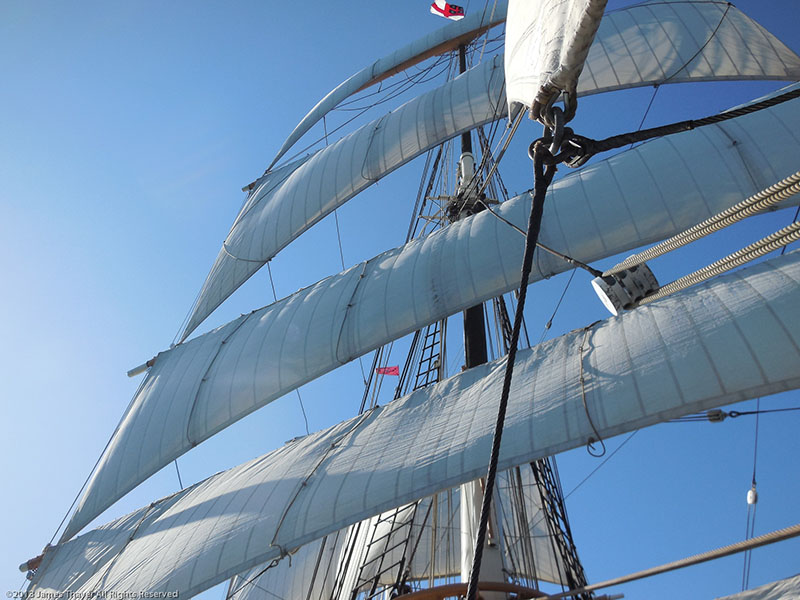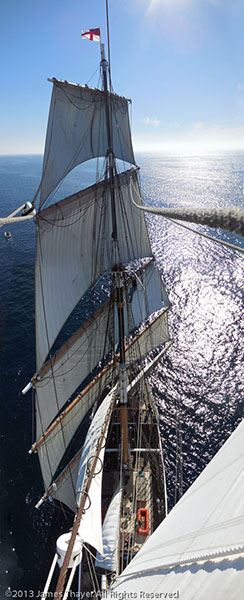

| Archive Blog Cast Forum RSS Books! Poll Results About Search Fan Art Podcast More Stuff Random |
|
Classic comic reruns every day
|
1 Mate: The pirates are miles ahead of us, Captain Ponsonby. How are we going to find them with the entire Caribbean to hide in?
2 Crows Nest: Smoke off the port bow!
3 Ponsonby: Where there's smoke, there's fire, Mister Mate.
4 Mate: Does that smugness come from being captain, or just from being British?
|
First (1) | Previous (1516) | Next (1518) || Latest Rerun (2890) |
Latest New (5380) First 5 | Previous 5 | Next 5 | Latest 5 Pirates theme: First | Previous | Next | Latest || First 5 | Previous 5 | Next 5 | Latest 5 This strip's permanent URL: http://www.irregularwebcomic.net/1517.html
Annotations off: turn on
Annotations on: turn off
|
That'd be insubordination if it wasn't funny. :-)
But after all, Ponsonby knows when there's smoke on the water, there's fire in the sky.
This is slightly complicated by manoeuvres such as tacking, and reaching across the direction of the wind, but generally speaking if you see a model ship you should expect the pennants to be fluttering more or less towards the bow, and most definitely not backwards towards the stern. I first learnt this when assembling and painting miniatures for the game Man O' War (which is a pretty cool tabletop miniature wargame).
The pennants on this ship are of course fluttering in the correct direction.
It's not really possible to generalize on which way the flags will blow since it all depends on the point of sail. As well, it is not really possible to state that the wind will generally be from behind the ship as it all depends on where the wind is blowing from and where you are trying to go. In the few hundred sea days that I've spent aboard square-rigged sailing vessels, we probably spend more time sailing along on a beam reach than any other point of sail. But that is because of the prevailing winds relative to where we typically sail.
Bottom-line, generally, the flags could be pointed in any direction.
What artists and modelers tend to get wrong, though, is that they will depict a ship trimmed for a particular point of sail and then show the flags in a manner that is inconsistent with that point of sail.
If the yards are square to the ship, then the ship is running before the wind (a.k.a. downwind) and the flags will be blowing forward in the direction of travel (as shown in the comic). (In a perfect world, the ship would be moving at the speed of the wind and the flags would be limp, but with the drag of the water etc. perfection is never attained.)
On a broad reach the wind is behind the ship but at an angle. The yards will be braced around somewhat. The flags will be forward but at an angle to the ships travel. (See photo below.)

On a beam reach, the wind is from the side (off the beam, we say.) The yards are braced further around. The flag will be flying to side of the ship and somewhat aft (depending on the speed of the ship relative to the wind.) This is usually the fastest point of sail. (See photo below.)

Sailing upwind (close-hauled), the yards are braced around as far as they can be (shrouds and backstays limit how far round the yards can be braced and ultimately limit how close—that is to say how far one can point upwind—to the wind one can sail. Flags will be fluttering to the aft as shown below:

(Photos © 2013 James Thayer, reproduced with permission.)
|
LEGO® is a registered trademark of the LEGO Group of companies,
which does not sponsor, authorise, or endorse this site. This material is presented in accordance with the LEGO® Fair Play Guidelines. |